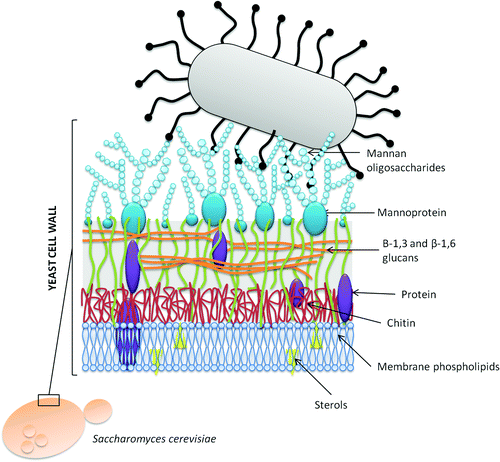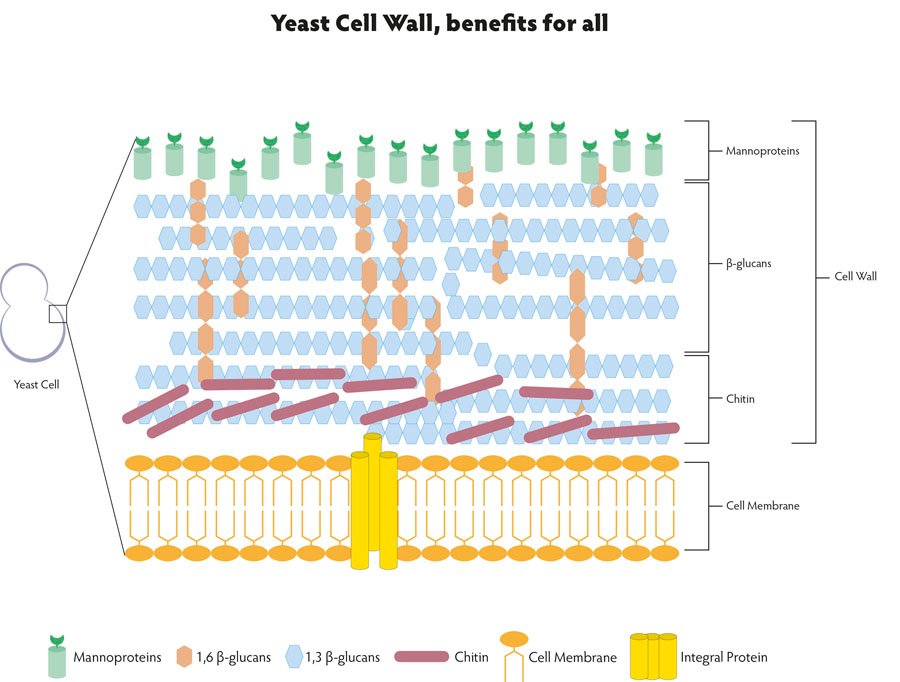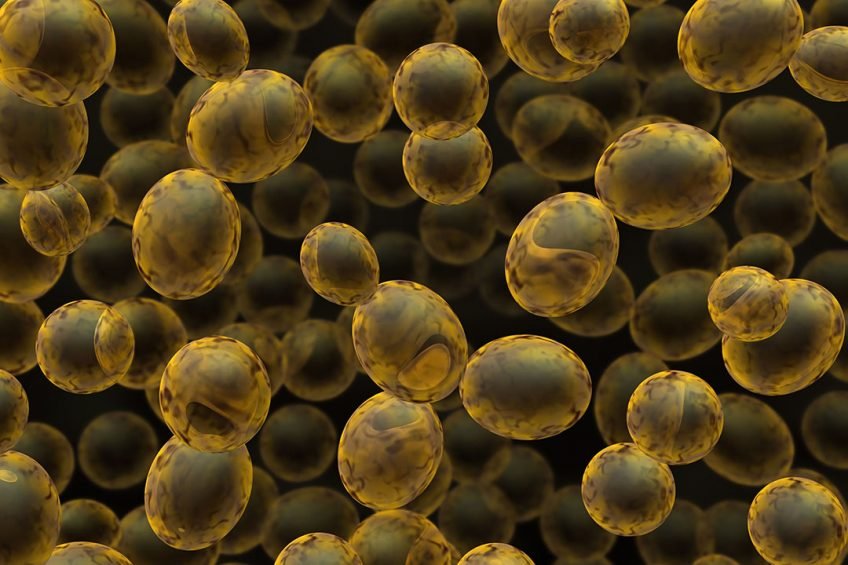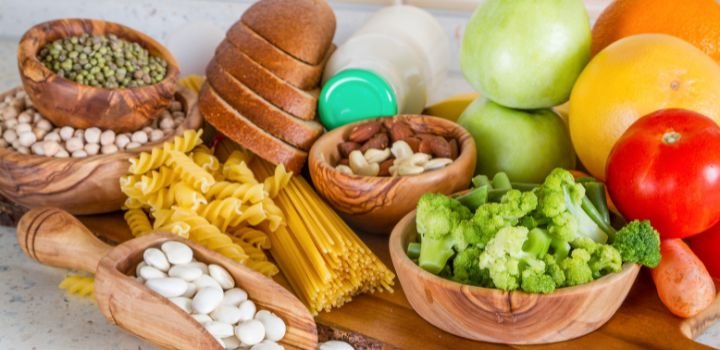The applications of liquid feed have become an is growing interest nowadays. This includes feed ingredients for use in water, milk replacers, liquid premixes, liquid feeds, injectables and supplement buckets. The benefit of administering feed ingredients via liquid carriers is that they can be administered as soon as it is determined that the animal needs intervention.
This is in contrast to the application of feed ingredients via dry feed, which takes time to order new batches, manufacture and deliver before they are finally available to the animal. In addition, sick animals stop eating but continue to drink water. However, many of the conventional feed ingredients used as antibiotic substitutes are insoluble. The widely used yeast cell wall, often called MOS, is an example.
MOS: Prevention of microbial infections
The first step in the induction of infection by pathogenic intestinal bacteria is the adhesion of the pathogen to the host intestinal cells. The pathogen binds to the carbohydrates present on the surface of the intestinal cells by means of an adhesion element (cell surface receptor) present on its exterior. Only once the adhesion is successful, the pathogen begins to secrete virulence factors that damage host tissues, thus allowing the pathogen to subsequently invade the host. After the invasion, multiplication of the pathogen in the damaged host tissue leads to infection.


The adhesins of different pathogens are different. However, major pathogens such as Salmonella, E. coli and Clostridium contain adhesins that preferentially bind to mannosylated surface carbohydrates present on the exterior of the host intestinal cells.
In the presence of MOS in the intestinal lumen, the adhesion of these pathogens to enterocytes is inhibited. The MOS will bind to the adherents on the pathogen. Thus, MOS-coated pathogens can no longer bind to mannosylated surface carbohydrates on enterocytes. In contrast, MOS-coated pathogens are guided through the gastrointestinal tract and the pathogens are unable to exert their harmful effects.
Yeast cell wall structure
Yeast cell walls are widely to reduce the impact of microbial infections in the animal feed industry. Approximately 1000 scientific papers have been published on the benefits of yeast cell walls for animals. The benefits of yeast cell walls in improving the resistance of animals to microbial infections have been accepted by statistical meta-analysis of the results of these studies.

The active component of the yeast cell wall that is beneficial to its health is MOS. Since yeast cell walls are spheres, the compounds present on their exterior are components that interact with their environment. The outer part of the yeast cell wall is mainly composed of mannoproteins. Mannoproteins are proteins that are highly glycosylated by branching mannan oligosaccharide (MOS) chains. These MOS form chains on the outside of the yeast cell wall and they interact with pathogens so that pathogenic infections in production animals are reduced/prevented.
Hydrolyzed Yeast Cell Wall (MOS)
Mannose proteins are inherently soluble components. However, in the natural yeast cell wall, mannoproteins are encapsulated in an insoluble β-glucan polymer matrix and periplasmic space. Hiyeast has now developed a purified soluble mannoprotein product containing approximately 20% mannans: Hydrolyzed Yeast Cell Wall (MOS), which is not only soluble, but also effective at doses approximately 3 times lower than conventional yeast cell wall/MOS products (150-1000 g/ton feed). This is because, in Hydrolyzed Yeast Cell Wall, all MOS is bioavailable, not just the MOS present on the outside of the yeast cell wall spheres.
This soluble MOS product will allow the benefits and reliable dosing of yeast cell walls to be utilized in liquid feed applications. For more information, please visit our website.






